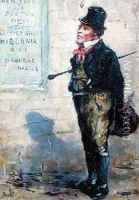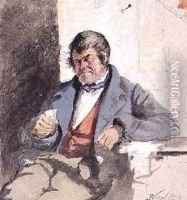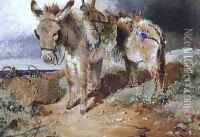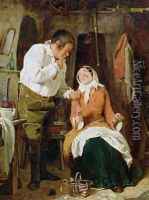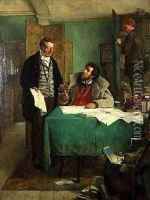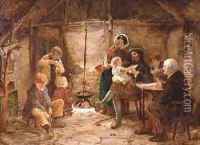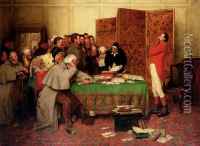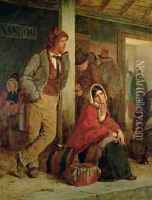Erskine Nicol Paintings
Erskine Nicol was a distinguished Scottish genre painter, born on July 3, 1825, in Leith, a suburb of Edinburgh. He is best known for his depictions of everyday life in Scotland and Ireland during the 19th century. Nicol exhibited a natural talent for art at an early age, which led him to study at the Trustees’ Academy in Edinburgh, where he was under the guidance of Sir William Allan and Thomas Duncan, both respected artists of their time.
After completing his studies, Nicol began his career as an art teacher while continuing to develop his skills as a painter. He initially focused on portraiture but soon found his niche in genre painting, portraying scenes of rural and urban life with a particular interest in the lives of the common people. His works are characterized by their keen observation, sense of humor, and often a touch of satire.
In 1846, Nicol moved to Dublin, where he taught at the Royal Dublin Society's School of Art. The move to Ireland had a profound impact on his work, as he became deeply interested in Irish subjects and themes. He captured the character and expressions of Irish peasantry with both sympathy and wit, earning considerable success and recognition.
Throughout his career, Nicol exhibited extensively, notably at the Royal Academy, the British Institution, and the Royal Scottish Academy. His paintings were well-received, and he attracted patrons from across the British Isles. In 1866, Nicol was elected an Associate of the Royal Scottish Academy and became a full Academician in 1868.
Nicol spent much of his later life in London, where he continued to paint and exhibit his works. Despite living in England, he frequently traveled to Scotland and Ireland to seek inspiration for his paintings. Nicol's contribution to genre painting was significant, and his work provides a valuable insight into the social history of the period.
Erskine Nicol passed away on March 8, 1904, leaving behind a legacy of detailed and empathetic portrayals of 19th-century life in the British Isles. His art remains admired for its narrative quality, technical skill, and the candid representation of his subjects.



